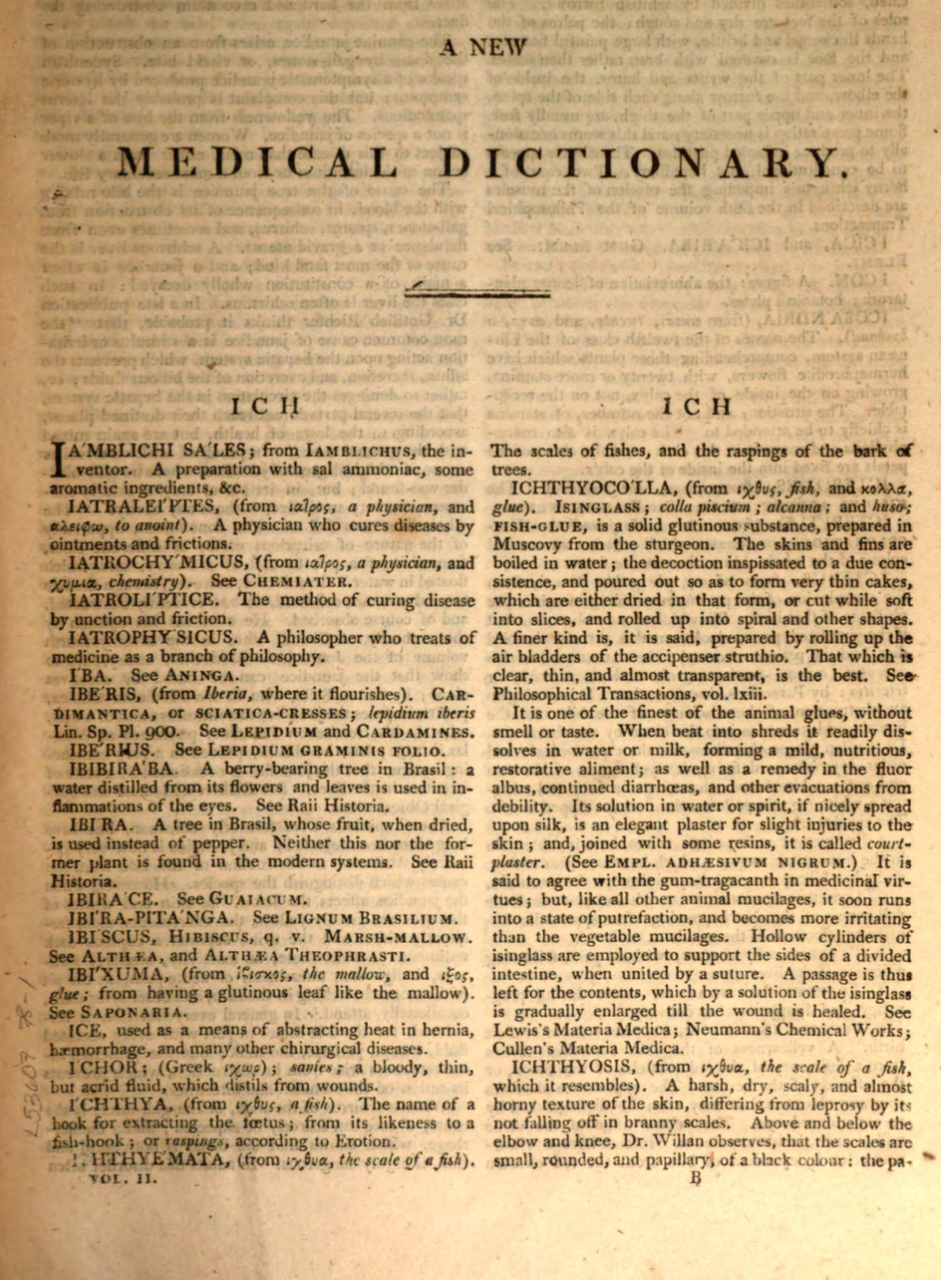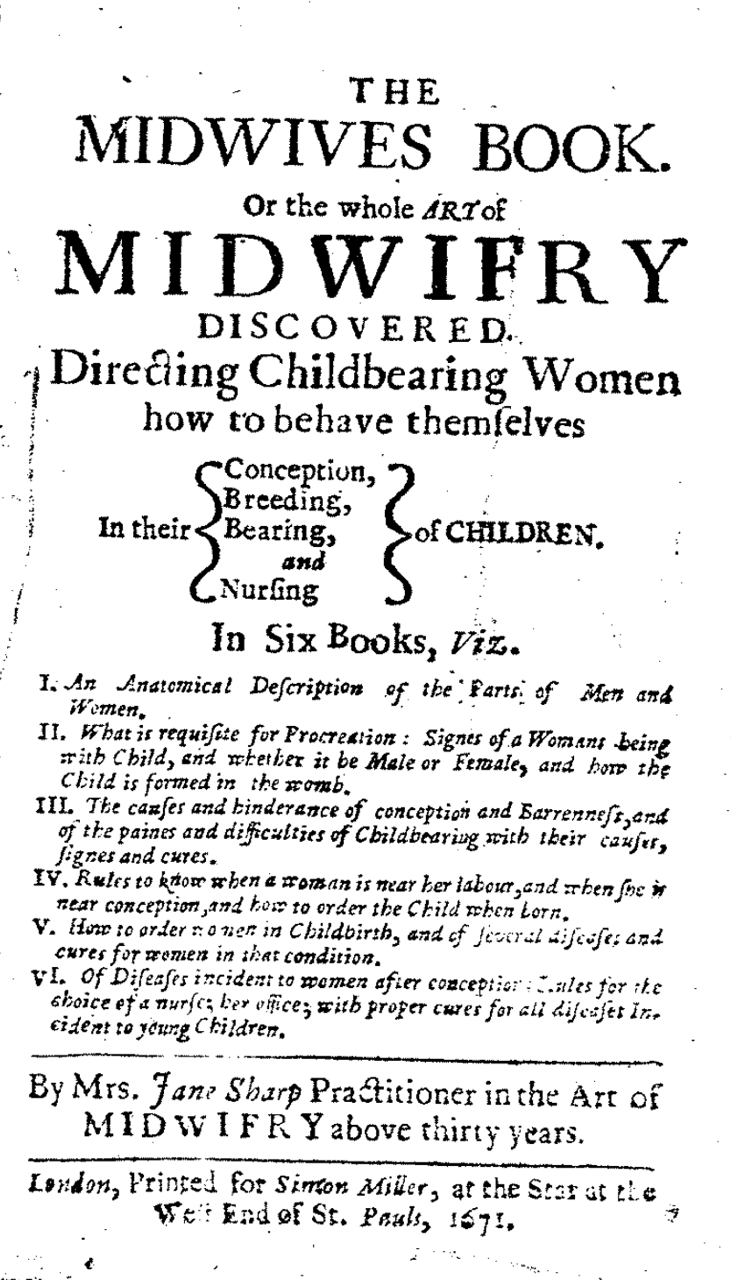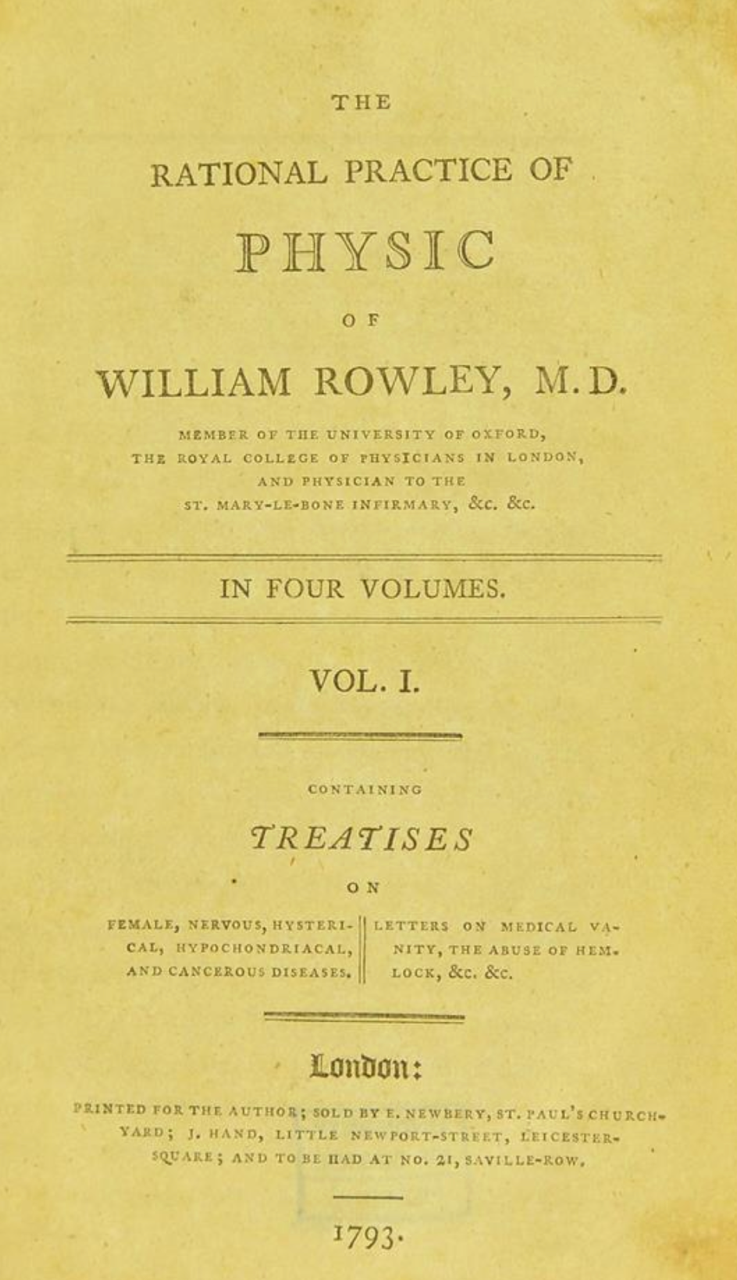‘This morbid craving for eating earth’: Gender, Race, and the Medical Community in the Eighteenth-Century Atlantic World
“In Guinea, the negroes eat a yellowish earth, which they call Caouac. When brought as slaves to the West Indies, they try to obtain a similar earth, and affirm that in their own country the habit never did them any harm. In the American Islands they were made ill by it, and it was forbidden in consequence; but a kind of earth…was, in 1751, sold secretly in the market in Martinique.” [1]
- Alexander de Humboldt, Aspects of Nature (1808)
Alexander de Humboldt’s experiences he wrote in Aspects of Nature, Different Lands and Different Climates with Scientific Elucidations covered many societies who consumed “earth,” but also shared the experiences of enslaved people who were attempting to transfer their cultural practices to their new location. The practice of consuming “earth” by enslaved peoples would become a point of contention on the plantation between those in power and those who were subjugated. In 1785, a letter from Dr. James Adair McKittrick was published in Medical Commentaries, and he mentioned a “morbid disposition which [he called] Cachexia Africana…a most frequent and fatal predisposition to disease among the slaves.”[2] The French called the disease mal d’estomac (stomach evil), or manger de la terre (eating dirt) and was a well-known affliction during the eighteenth century. Dr. McKittrick had given an official medical term for the morbid disposition that was commonly known as dirt-eating to planters and physicians in the eighteenth-century Atlantic World.
All of these terms, both medical and lay, described the same condition known to European physicians and the general public as pica. A physician, who practiced in Jamaica, noted that dirt-eating was a “species of pica.” The medical diagnosis of pica was considered a common affliction in Europe as the condition was “very familiar to Virgins [suffering from chlorosis], and Women with Child.”[3] During this period, pica was defined in medical books as an “absurd Desire of eating Things which are unfit for Aliment”[4]; items such as, “scrapings of the wall, earth, or ashes, or chalk”[5] were consumed by many white, European women. Pica was allowed for pregnant women and “they often greedily eat these things without injury.” In young girls with chlorosis, “the primary disorder is to be removed”[6] with physical exercise and the “mind should be diverted with various objects, and the passions excited.”[7] The condition was easily treatable.
Dirt-eating, however, was a derogatory term typically used by physicians and slave owners who were immersed in plantation culture in the eighteenth-century Atlantic World. Many physicians wrote about the disease because they were in direct contact with slaves who were under their charge on plantations, typically in the West Indies. However, unlike white European women, dirt-eating in enslaved Africans was considered deadly. One physician noted there was,
‘no means of preventing the horrid practice of dirt-eating… a negro labouring under the malady is considered as lost. On many estates, half the number of the deaths…are owing to this cause.’[8]
Another physician commented, “out of 270 field negroes, 80 died the last year… it prompts them to devour, with the most sensual avidity, almost every thing that falls in their way, particularly lumps of clay.” [9] Enslaved Africans, like white European women, were lower within the social hierarchy than that of white European males in Western society; thus, the slaves’ bodies and minds would have been viewed as inferior to those at the top of the social hierarchy on a plantation. And because the habit was observed in enslaved people of both genders and all ages, physicians could not assume that dirt-eating was a gendered disease. From their perspective, the disease’s cause had to be something that was attributable to all African bodies. A diseased uterus, or Obstructed Menses could not be blamed as it was in white women, but an acrid stomach, learned habit, or mental disorder, in the physician’s view, could be the cause. Thus, a disease in white European women was common and treatable, but the same disease in enslaved Africans was deadly and very difficult to treat.[10]
Societies across the world consumed particular types of edible clay for a variety of reasons. Consuming clay was particularly common across the African continent amongst children and adults as the “processing and commercialization of clay into tablets, disks, or balls” has been well documented.[11] The Zuni Indians added clay to raw potatoes to “reduce the astringent” and bitter effects.[12] In South America, a “calcareous earth is sold in the streets as an eatable” and was “used with Coca.”[13] The consumption of earth has been a widespread practice throughout history, providing sustenance, enhancing flavors, and serving as a coping mechanism during times of scarcity in various non-Western cultures.
By 1809, the disease Pica was separated into three variations: “Chlorotica. Attending amaenorrhaea, often about the age of puberty [chlorosis]…Pregnantium. The pica of pregnancy…[and] Afrorum. Cachexia Africana, dirt-eating; a disease of negroes in Jamaica.”[14] In the next section, the description gives many details for “negroes.” The author showed their disgust of the habit in “negroes” and stated, that Cachexia Africana was a “species of cachexia, [and] among the negroes any dirt is devoured…Sometimes the most disgusting substances are coveted.”[15] The term pica speaks to the cultural distinction between Western and, broadly, African views on dirt in that Western physicians viewed eating dirt as detrimental to one’s health and pathologized the habit, while enslaved Africans viewed eating clay as medicinal, a food staple, and even spiritual.
Dr. McKittrick had formally named and pathologized the practice of eating earth, thus turning the “disgusting” habit into a legitimate disease that physicians should treat. McKittrick offered a method of treatment in his letter, noting a mix of Sinapi, spirit, and water was found to be useful for enslaved people suffering from the disease, because many physicians treating slaves were at a loss. It was not until the end of the 1790s that dirt-eating began to be taken seriously by most physicians who acknowledged that the causes of dirt-eating were more complex and intrinsic to the slave environment than had been previously written. And because of the slave’s particular situation most physicians argued that Cachexia Africana and chlorosis/pica were separate diseases that should be kept separate. However, not all physician’s agreed. A debate occurred within the medical community from the 1800s through the 1830s between physicians who insisted that the two diseases, Pica and Cachexia Africana, were either the same disease because the symptoms were the same or that the diseases were different because the bodies that were affected were innately different. Physicians who believed Black bodies were innately different from white bodies won the debate.
Vicki M. Richardson is a Doctoral Candidate in History at Texas A&M University in College Station. Her work specializes in the construction of diseases, specifically dirt-eating/Cachexia Africana and Chlorosis/Pica, and the Western world’s changing ideas of the raced and gendered body in the eighteenth-century Atlantic World.
[1] Alexander de Humboldt, Aspects of Nature, Different Lands and Different Climates with Scientific Elucidations, Translated by Mrs. Sabine (Philidelphia: Lea and Blanchard, 1850), 158-159, https://collections.lib.utah.edu/ark:/87278/s603084n.
[2] James Adair McKittrick, “A few Hints on particular Articles of the Materia Medica, communicated in a Letter to Dr Duncan, from Antigua, by Dr James Adair, now Physician in Bath,” in Medical Commentaries, For the Years 1783-84, Vol. 9 (London: J. Murray and C. Dilly, 1785), 208.
[3] Thomas Nevett, M.D., The Rational Oeconomy of Humane Bodies (London: T. Parkhurst, and J. Robinson, 1704), 33.
[4] Richard Brooks, An Introduction to Physic and Surgery (London: J. Newberry, 1754), 58, http://hdl.handle.net/2027/njp.32101037570809. Aliment is defined by the OED as “that which nourishes the body of an animal or plant; nutriment; food,” Oxford English Dictionary, s.v. “aliment, n., sense 1.a”, July 2023.
[5] Jane Sharp, The Midwives Book, Or, the Whole Art of Midwifry Discovered. Directing Childbearing Women how to Behave Themselves in their Conception, Breeding, Bearing, and Nursing of Children in Six Books (London: Simon Miller, 1671), 257-258.
[6] William Rowley, M.D., The Rational Physic of William Rowley, M.D…In Four Volumes, vol. I (London: William Rowley, 1793), 388, http://wellcomelibrary.org/player/b21442411.
[7] Rowley, The Rational Physic of William Rowley, M.D., 16.
[8] Richard Shannon, M.D., Practical Observations on the Operation and Effects of Certain Medicines (London: Richard Shannon, 1794), 377, http://wellcomelibrary.org/player/b21355897.
[9] Pierre E. M'Callum, Travels in Trinidad during the months of February, March, and April, 1803, in a series of letters, addressed to a member of the imperial Parliament of Great Britain (Liverpool: W. Jones, 1805), 79, http://hdl.handle.net/2027/hvd.hxg8gm.
[10] Rana A. Hogarth has written two wonderful chapters on Cachexia Africana in her book Medicalizing Blackness: Making Racial Differences in the Atlantic World, 1780-1840 (Chapell Hill: University of North Carolina Press, 2017).
[11] Jacques Henry and Alicia Matthews Kwong, “Why is geophagy treated like dirt?,” Deviant Behavior: An Interdisciplinary Journal, no. 24 (2003), 366.
[12] John M. Hunter, “Geophagy in Africa and in the United States: A Cultural-Nutrition Hypothesis,” Geographical Review, vol. 62, no. 2 (April 1973), 171.
[13] Alexander Von Humboldt, Aspects of Nature, 159.
[14] Bartholomew Parr, M.D., The London Medical Dictionary…Vol. II (London: J. Johnson, 1809), 274, https://hdl.handle.net/2027/njp.32101064422445
[15] Parr, The London Medical Dictionary, 408-409.




